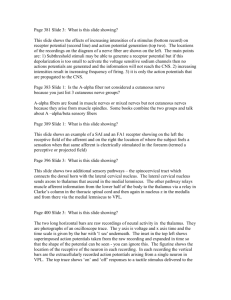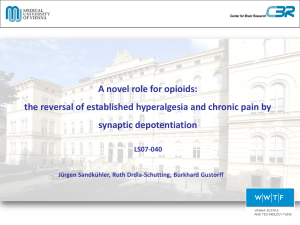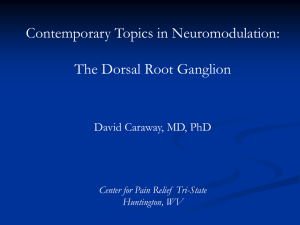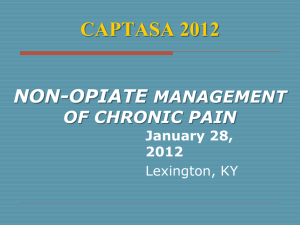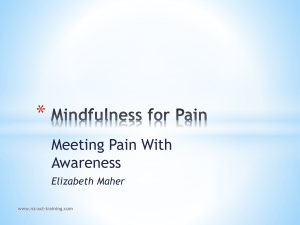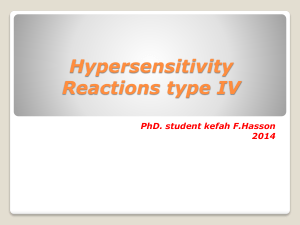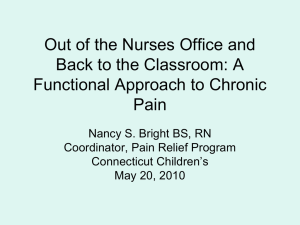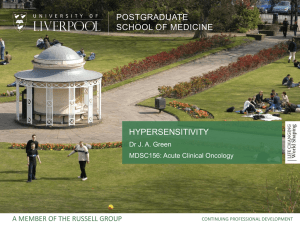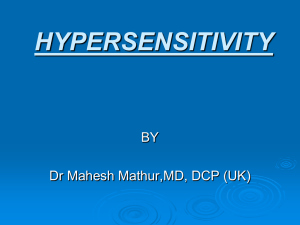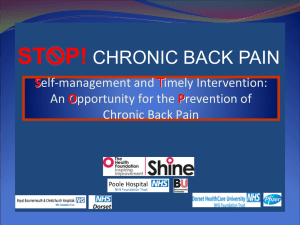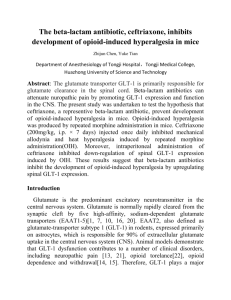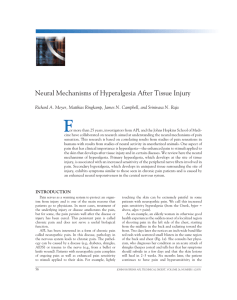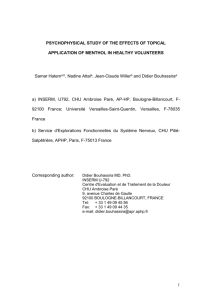Tori Collins - USD Biology
advertisement
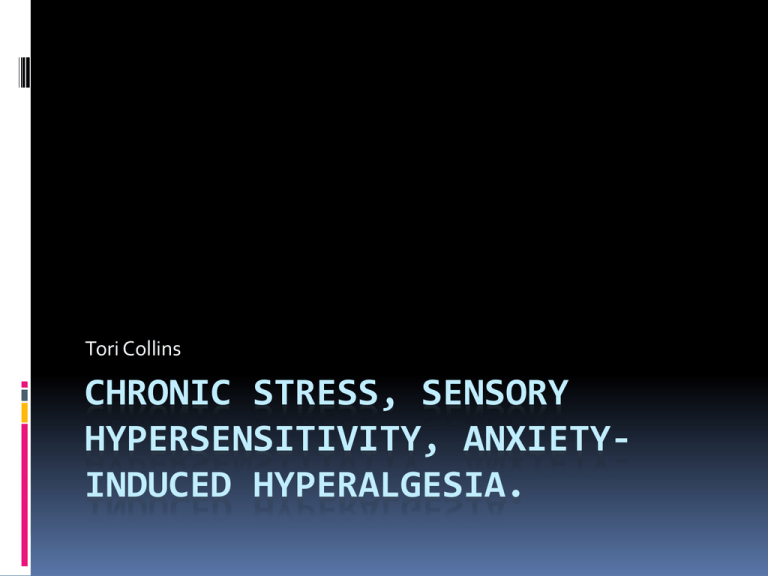
Tori Collins CHRONIC STRESS, SENSORY HYPERSENSITIVITY, ANXIETYINDUCED HYPERALGESIA. Pain and Stress Chronic pain is an inescapable stress Many patients with chronic pain suffer from depression Depressed patients have an altered perception of pain Biggest risk factor for depression is chronic stress Blackburn-Munros & Blackburn-Munro 2001 Pain integration Descending control of nociception plays a role in how we experience acute and chronic pain Nociceptive input is prioritized relative to other homeostatic needs Descending control can be stimulatory or inhibitory Can depend on behavioral, emotional and pathological states Pain integration Descending inhibition: intense stress and fear are associated with hypoalgesia Descending facilitation: inflammation, nerve injury, sickness, chronic opioid exposure are associated with hyperalgesia Pain integration The RVM can produce both analgesia and hyperalgesia Opiods, OFF-cells: analgesia CCK, ON-cells: hyperalgesia Chronic stress induces transient spinal neuroinflammation, triggering sensory hypersensitivity and longlasting anxiety-induced hyperalgesia Rivat C et. al. Intro After repetitive and sustained stress adaptation is impaired Hypercortisolism Hypertension Neuropsychiatric disorders Immune system can be affected Increased inflammatory response Excess of COX-2 leads to neuronal damage Intro Social defeat is a model for psychological chronic stress Animals display anxiety/depression-like behaviors Methods Intruders (male Sprague-Dawley rats 300- 325g) Residents (male Long-Evans rats, 700-800g) Rats were divided into defeated intruders and non-defeated intruders each receiving either vehicle or drug Social defeat Intruders were placed into resident’s cage for 45 min periods on 4 consecutive days Period 1: no physical contact Period 2: either intruder was defeated by resident or resident was removed and intruder allowed to explore freely (non-defeated group) Experimental design Elevated plus maze Methods Nociceptive sensitivity was assessed with von Frey and Randall-Selitto tests Methods Formalin was injected under the skin on the dorsal surface of the hindpaw and pain responses were recorded for 70 min Pain is assessed on a 5 level scale according to posture Ex. 0 = normal posture, 4 = shaking, licking or biting of paw Figure 1 Figure 2 Figure 3 Figure 3 Figure 4 Figure 5 Figure 5 Figure 6 Figure 7 7 Figure 7 7 Discussion Psychological stress produced a transient plastic change in the spinal cord Spinal inflammation was correlated with mechanical sensory hypersensitivity RVM-CCK dependent descending pathways Distinct mechanisms for sensory hypersensitivity and formalin-induced hyperalgesia Discussion Spinal neuroinflammation was related to sensory hypersensitivity mediated by iNOS and COX-2 but not to anxiety The inflammation was linked to the stress itself, not the anxiety state produced by the stress Discussion The decrease in pain threshold in the rats exposed to social defeat was related to CCKdependent facilitatory pathways from the RVM A CCK-2 receptor antagonist may provide pain relief in the context of anxiety-induced hyperalgesia FIGHT THE POWER http://www.youtube.com/watch?v=WmBrEQ 6Kh9o
